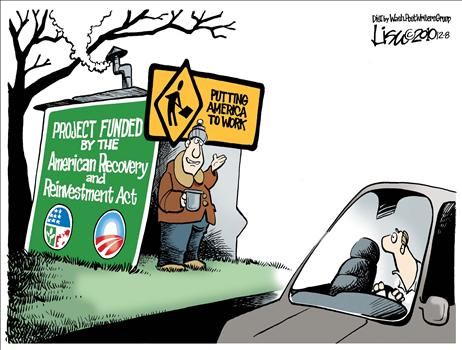Density aspects
12/08/2010 Leave a comment
Be yond land use and urbanization, density needs to be more closely examined to put things in perspective. In addition to the higher efficiency for and availability of transit, high density has other advantages, which can basically be summed up by big cities have “more stuff.” Living in high density is a choice, and not for everyone though. The HDC (high-density coalition) seems to want to force that on everyone. Many people don’t want that crowdedness. The 2 charts below show urban areas, categorized by density & total size of the urban area. Data is from the 2000 Census, when national population was 281M. It should be noted that there is an apparent gap in the figures below for non-urban & earlier figures for rural. Those names do not mean the same thing. And the classifications are neither always used nor consistent. Between populations of 10,000 & 50,000 those areas are considered urban clusters, rather than being an urban area. Both are still urbanized. As for what constitutes an urban area, the core needs to have a minimum density of 1,000, counted by Census block, and nearby blocks of at least 500 density are included. For the charts, the number in (_) is the number of urban areas within that population range.
yond land use and urbanization, density needs to be more closely examined to put things in perspective. In addition to the higher efficiency for and availability of transit, high density has other advantages, which can basically be summed up by big cities have “more stuff.” Living in high density is a choice, and not for everyone though. The HDC (high-density coalition) seems to want to force that on everyone. Many people don’t want that crowdedness. The 2 charts below show urban areas, categorized by density & total size of the urban area. Data is from the 2000 Census, when national population was 281M. It should be noted that there is an apparent gap in the figures below for non-urban & earlier figures for rural. Those names do not mean the same thing. And the classifications are neither always used nor consistent. Between populations of 10,000 & 50,000 those areas are considered urban clusters, rather than being an urban area. Both are still urbanized. As for what constitutes an urban area, the core needs to have a minimum density of 1,000, counted by Census block, and nearby blocks of at least 500 density are included. For the charts, the number in (_) is the number of urban areas within that population range.
From the data, some particular observations can be made:
• For the total of all 500 areas, having 69% of all people, there is an average density of 2,665.
• Exactly 1/3 lived in areas of 2M+ in 18 locations, with an average density of 3,600.
• Density continually declines for smaller areas, on average.
• Areas below a population of 300,000 have a density below 2,000.
• Slightly less than 1/3 live in areas below a population of 40, 000.
What is the significance of that? There are not that many people who live in high or even medium density areas. It is true that the urban area can be misleading, compared to many of the cities that make up the urban areas. A rough estimate puts the amount of people living in cities above a density of 5,000 10%-25%
So, what are the negatives for low densities? And how are those negatives eliminated in dense cities? There are only about 6 dense large cities. Are those cities great? Affordable? Have many extra benefits? NO! That’s a fail right there for the anti-sprawl. How do those 6 large cities “subsidize” the ~75% of people who live at low densities? (the difference at medium density) Back to oil. Connection to density? It’s a huge hoax that a lot of of oil is saved at higher density.
To get an idea of central city densities and their urban area densities, the chart below shows a few selected urban areas, ranked by core density, # displayed; urban density # also displayed. The populations are depicted without numbers. Only about 9% of the population lives in cities above density of 10,000. Many people like that? Okay, now you’re typing about “quality” of urban design, rather than just whatever form is there. Although you did describe more of what you mean. I’m still not sure how our past discussion morphed into that, when it was about density.
You guys try to avoid density, but high density is necessary for how you want people to live. There’s admission of that in denouncing core cities with low density as too suburban, and in wanting walkability. UAs don’t take up much land, 75,000 sq.mi., <3% of the contiguous states. All the urbanized people, at a density of 10,000, could fit into an area the size of WV (24,000sq.mi.). Is that necessary? Or, put another way, all current UAs could have 3.5X as many people jammed in, to be at 10,000ppl/sq.mi. That would be horrible. Try India.
More specific analysis can be seen in particular urban areas below. The data for cities are not included, but it is evident that many people live in the suburbs at lower densities. The HDC (high-density coalition) seems to have a goal of at least 8,000 people per square mile (Alexandria happens to be at that). Most people choose otherwise. Sorrow for those people in the PHX UA, living in houses at 4-6 DU/acre, when they could live at 10-20 DU/acre, or in multi-family structures, if only the locals didn’t “mandate” some yard. There is plenty of zoning, at all densities in Maricopa County, including smart-ass growth–increasing with the new LRT. Strange that its ridership has tied the VTA LRT, which has double the length, is 22 years old, and higher densities.
Related Articles
- Urban areas ‘help people evolve immunity to disease’ (telegraph.co.uk)
- Reach for the sky (lookatvietnam.com)
- How Critical is Population Density for Public Transit? (pollutionfree.wordpress.com)







